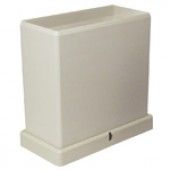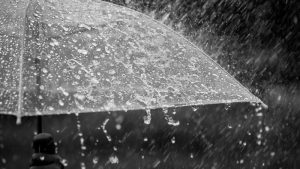Precipitation is the release of water from the atmosphere to the earth’s surface as a solid or liquid. It includes rain, snow, hail, sleet, and dew.
 Rain
Rain
In New Zealand, rainfall is a very common type of weather. Rain starts above us when small droplets of water in the clouds join together until they get too big and heavy and fall from the clouds. However, different cloud types can produce different rainfall. Heavy rainfall after a hot summer day may fall from tall, largely white, fluffy cumulonimbus clouds. Light rain, also known as drizzle, may fall from low, grey, layered cloud called stratus.
It is useful to measure the amount of rainfall we have, as it provides an important source of water to reservoirs giving us drinking water. Rainfall is easy to measure by recording how much water collects in a rain gauge. The rain gauge is quite accurate as long as it is set up safely at ground level in an exposed place. The amount of rainfall collected in the gauge is measured in millimeters. Rainfall data can be used to work out monthly averages and make comparisons with previous years.
Snow
During the winter months when temperatures are cold, (at or close to 0º Celcius) snow will fall from clouds instead of rain. Snow starts off in the same way as rain, with tiny droplets of water joining together in clouds until they are too heavy. However, when they fall it is important that the air is freezing for there to be snow. Otherwise, the snowflakes will melt and become sleet or rain before they reach the ground. Every snowflake that falls from clouds is different, made from ice crystals and with 6 sides.
Snow cannot be measured in the same way as rain, as a normal rain gauge may get blocked. Instead, the amount of snowfall is measured by inserting a ruler into a layer of snow that is flat and has not been drifted by the wind.
Hail
 Hail falls as hailstones, which are like small balls of ice. Their diameter usually ranges from under a centimetre to 5cm. Larger hailstones can cause damage to crops and gardens, greenhouses and glass roofs.
Hail falls as hailstones, which are like small balls of ice. Their diameter usually ranges from under a centimetre to 5cm. Larger hailstones can cause damage to crops and gardens, greenhouses and glass roofs.
In the United States of America, a hailstone was found with a circumference of 43cm, weighing 0.7kg. In China a 4.6kg hailstone has been recorded. In April 1986, 92 people were killed after a storm of hailstones weighing 1kg.
